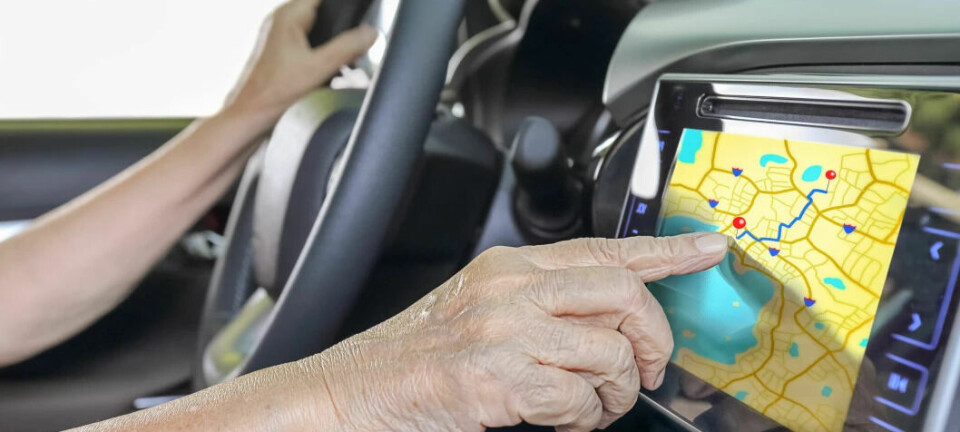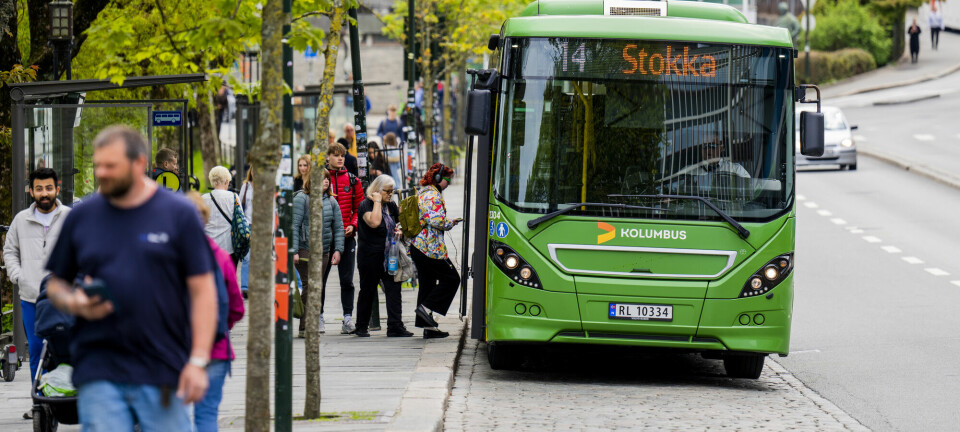
Research indicates that certain features in new cars may actually compromise safety
Most of the beeping, vibrating, and jerking in new cars save us from accidents. But safety features can also have the opposite effect, new research shows.
There are a whole bunch of safety features in new cars.
For example, you can get the car to maintain the same speed as the car in front of you. Then you don't have to brake when it brakes, and you don't have to press the gas when it does the same.
This is called adaptive cruise control.
Another function is called lane assist. It jerks the steering wheel when you drive a little too close to a ditch.
These are both functions that are supposed to make driving safer.
Most viewed
No content
But do they really do that?
Can make us less attentive
It turns out that most of the functions contribute to reducing accidents, says Vibeke Milch Uhlving. She is one of the researchers behind two new reports from the Norwegian Institute of Transport Economics (TØI).
But there are also some functions that have the opposite effect.
This includes the two mentioned above, adaptive cruise control and lane assist.
“They can actually contribute to the opposite – thus making us less safe. Because if we rely too much on the car braking, maintaining speed, and changing lanes for us, we divert our attention to things other than the traffic,” says Uhlving.
Reaction time becomes longer
So, we can become less attentive to what happens in traffic, and we might be more tempted to engage in other activities while driving.
“When we monitor a process instead of doing it ourselves, we also take longer to engage with what’s happening. So, the reaction time becomes longer,” Uhlving tells sciencenorway.no.
There is therefore a big difference between keeping the car within the lane yourself and letting the lane assist function do it for you.
Along with colleagues at TØI, Uhlving has reviewed research on the effects of the safety features in new cars and how they affect the number of accidents.

Uhlving emphasises that both adaptive cruise control and lane assist often do what they are supposed to do, namely helping drivers to maintain a good position on the road and maintain a steady speed.
However, much of the research suggests that we become less vigilant when these systems take over these tasks for us than when we do them ourselves.
Can confuse drivers
Another thing that the researchers discovered is that drivers find the functions complicated. Often too complicated.
“Many drivers don’t fully understand how the driver support systems work. This can lead to misconceptions, which in turn can lead to dangerous situations,” says Uhlving.
Dagfinn Moe is a researcher at SINTEF. He has also looked at driver support functions, including in a Norwegian report from 2023.
“The new report from TØI gives a good picture of the situation as we have also concluded,” he tells sciencenorway.no.
Should be a requirement when learning to drive
Moe agrees that the features can be overly complicated and that drivers do not always understand how they work.
“The requirement for the driver to familiarise themself with the most basic functions is important and should be a requirement in learning to drive. Perhaps those who sell the cars should also think about how they can contribute here. The less you practice and maintain the skill, the worse it becomes,” says Moe.

He emphasises the importance of not relying entirely on the car’s control.
“The responsibility of driving lies with you, and safety features should only serve as aids where necessary,” Moe points out.
Good aids
Moe says that there have been several improvements with adaptive cruise control over the last 20 years, but that the function still does not fully understand traffic situations.
There is also a difference in quality and accuracy, which varies among car brands.
This applies, for example, to reactions to sharp turns and hilltops, at what point they should adjust the speed relative to the car in front, and how hard they should brake.
“But the functions are good aids if used correctly by the driver,” says Moe.
Distracts drivers
New cars can make a lot of noise. The parking assistant, fatigue or distraction warning, and the reverse camera beep, jerk, and howl.
This can be both distracting and stressful for the driver, according to the new report.
“For many, warnings can be disruptive and have the opposite effect on safety. We need to look at the overall picture and how the systems interact. There has been little research on this until now,” Uhlving explains.
Which functions work best?
When asked which safety features work best, Uhlving says that this is very dependent on the situation: Is the car going at high speed, are there many other cars nearby, who is driving, is it a highway or a country road?
She says, however, that systems like electronic stability control, automatic emergency braking, collision warning, blind spot warning, and detection of vulnerable road users, reduce the risk of certain types of accidents in specific situations.
“However, the research that exists is limited, so it’s not possible to say anything about the effects of all systems on road safety,” she says.
Limited training
Most of the research suggests that cars are becoming safer, and many systems will make it safer to be a driver, according to Uhlving.
“On the other hand, today's cars – both electric and fossil-fuelled cars – have become quite advanced and are equipped with many different systems. As of today, there is limited training for these systems, and we also know little about how the use of driver support systems affects driving skills in the long term. More knowledge is needed here,” says Uhlving.
———
Translated by Alette Bjordal Gjellesvik
Read the Norwegian version of this article on forskning.no
References:
Høye et al. Driver assistance systems and accident risk. Institute of Transport Economics, 2023.
Uhlving et al. Advanced driver support systems and screen interfaces in cars. How do they affect driver behaviour?. Institute of Transport Economics, 2023.


































